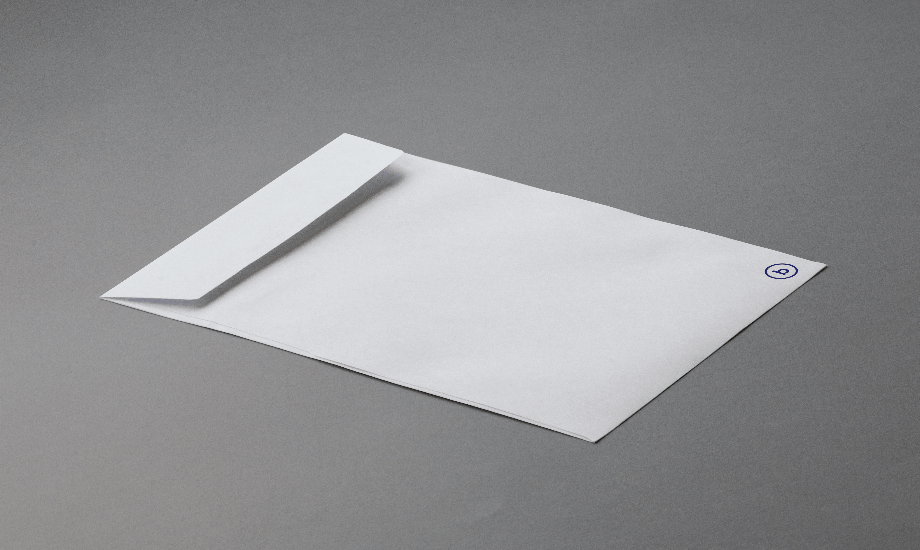Back Of The Envelope Financials
In the last section, we looked at the basic maths of every business:
Estimating the size of your market
Different ways of setting prices
Retaining and re-engaging customers
Variable costs (Cost of good sold)
Fixed costs (Overheads)
Startup costs
Gross margins (Contribution margins)
Net margin
Breakeven points
EBITDA
Margin of safety
What a great start!
This gives you a way of writing out an educated guess for your revenues and costs.
Now with a few more details, you’ll be ready to draw up your “back of the envelope” numbers, which show us whether or not the business is on track to be profitable.
You don’t need a spreadsheet yet, these can literally be estimated on a piece of paper or whiteboard
They’ll give us early warning of deeper issues and a way of testing good “What If?” questions.
They help us spot problems and potential upsides, showing us how much money we’ll make or lose in different situations.
To put it another way, no external advisor or financial analyst can build accurate financials for you without these specific pieces of information.
Even if you want to outsource the work, you need to form an educated guess for each of them.
Let’s look at some of the helpful insights our financials can offer the business, and some ways of improving the quality of your guesses…
Unit Economics
Once we have a sense of our costs, revenues and margins, we can begin to answer a very useful and deceptively simple question: when we serve one customer, or sell one product, where does the money go?
Here are some helpful questions to work out your answers:
1. How much do we charge each customer?
2. What are all of the Variable Costs (aka Cost of Goods Sold) involved in serving one customer? We can work out the cost of serving a batch of customers, and divide it by the number of sales we make.
3. What are the Overheads for the business each month, week or day?
How many customers are we serving in that time?
What’s our average overhead per sale?
4. If we take our price, and subtract the Variable Costs and the Overheads per customer, how much money is left?
So if you were thinking of selling burgers, this might look like:
1. We charge $18 for our deluxe cheeseburger
2. It costs us $1 for the bun, $3 for the patty, 70c for the cheese, $1 for the salad, and 50c for the relish. That’s a total of $6.20, maybe more if it needs a takeaway box.
3. Our overheads are $900 a day, including rent, staff and utilities, and we serve 150 customers on a normal day, so there’s $6 of overheads per customer.
4. $18 - $6.20 - $6, leaves us with $5.80 of margin per burger.
Those numbers don’t look right, but they’re clear.
If we spoke to someone who works in hospitality, they’d quickly point out the costs we forgot, or the options for our pricing, or suggest we’ll need to upsell fries and drinks in order to make more money per customer.
Either way, we can make smarter decisions when we can see the maths of each product/service.
The numbers are slightly wrong, but the model is useful.
Designing your Margin Mix
Most businesses aren’t selling one uniform product or service – there’s a menu of options and upgrades, each with different price points.
e.g. fries and soft drinks will likely have higher margins than those burgers.
That’s why it’s worth repeating this process:
Some customers take longer to serve, so the staff costs are higher
Some products and services use more materials, or have materials that can’t be bought in bulk, leading to higher per-unit costs
You can better set your prices across the whole menu
You can justify the difference in price if customers ask about them
You can use some menu items to subsidise others
What you’re likely to discover is that most businesses have a “margin mix”, where some items make a lot of surplus, some scrape by and some actually lose money.
It might be that the market won’t bear the true cost of a particular product or service.
Maybe customers are used to paying a lot more than what it costs to produce something.
While it might seem democratic to apply a thin margin across all of the things you sell, you’ll likely find more success by adjusting your margins to suit your customers, and find a balance that doesn’t put you at risk of losing money.
Broadly speaking, we can group your menu items into three categories:
A Cash Cow is a product or service that earns a heavy margin and delights a customer.
Cash Cows aren’t rip-offs, they are popular and attract a higher price point than what they cost. There’s nothing immoral about earning a high margin, so long as everyone is happy.
e.g. a concert ticket, a business class flight, an eye fillet steak, a designer bag or an iPhone.
Customers love them, and they generate serious margins.
Cash Cows are often achievable through Value Based Pricing – where you can offer a customer something really valuable to them, even though it doesn’t cost you very much to produce.
Cash Cows are excellent.
A Small Margin item is something that you sell in high volume, but only charge a little more than what it costs you to produce.
Lots of products are sold like this, where the business owner charges a fair price for a commodity good.
This goes for petrol, chocolate bars, Dell computers, budget airline tickets or phone credit.
Customers love them, and they keep the business ticking along.
There’s not much room for error, but you also won’t be accused of profiteering.
Small Margins are often achievable through Cost Based or Market Based pricing, where you charge “the going rate” for something generic and interchangeable.
Small Margins are excellent.
A Loss Leader is a product or service that costs more than it earns, and sets up a second purchase that generates a heavier margin.
Many businesses create loyal customers through loss leaders, because they necessitate the additional purchases that then become Cash Cows.
This is why some bars offer free salty snacks like nuts or pretzels – to sell more drinks.
This goes for video game consoles, milk at the supermarket, razor handles, printers and Nespresso machines.
The initial purchase makes no margin, but the necessary follow-ups are highly lucrative.
Loss Leaders are sometimes excellent.
For example, your brand might have Cash Cow services that customers love, some Small Margin products and accessories, and then have some Loss Leader activities like a YouTube channel or a stall at local events.
They are all great, and they reinforce each other, so long as they’re in the right proportion.
It turns out, these three buckets are sitting on a see-saw.
On the left are our Cash Cows, on the right are our Loss Leaders, and the Small Margins are just to the left of the centre.
Here’s the deal – you can have any combination you like, so long as the scales tip towards the left.
That’s financial sustainability.
If it tips to the right, you’re not financially sustainable.
The Three Lies
What tends to happen at this point is the entrepreneur tells themselves one of three lies.
Lie #1 – Pretending a Small Margin item is a Cash Cow
This is easy to do, since a lot of your business’s costs are invisible at first, especially the cost of your time.
The revenue feels like it outweighs the costs, but when we zoom out, we see that things aren’t so lucrative.
We’re not keeping much milk from the Cash Cow.
Lie #2 – Pretending a Loss Leader is a Small Margin
This is also easy to do, since those invisible costs stay hidden.
We can see some income from our activities, but the amount of work involved means that it hasn’t actually made a profit, at least not in this first instance.
If this becomes the first of many purchases, then we’ll make a margin, but in this case it’s been an overall loss.
Lie #3 – Pretending a Loss is a Loss Leader
A Loss Leader that doesn’t lead to anything is…a loss.
There’s really no way to celebrate a loss.
We can celebrate the use of a Loss Leader to acquire a new customer, but if it doesn’t work then we have to admit what’s happened.
This lie is often accompanied by words like “good exposure”, but this is a consolation prize at best.
If you can’t identify what it will lead to, then it’s not a Loss Leader.
Customer Volumes
In some businesses, particularly service businesses, they might not have Cash Cow products or packages, but rather Cash Cow seasons, where they are particularly busy.
These “Peak Weeks” will see much higher revenues but not so many extra costs, making it a lucrative week across the whole company.
Vice versa, a quiet week with minimal sales may end up losing money, even though your menu items and customer service haven’t changed at all.
For that reason, it’s helpful to draw up how many customers you think you’ll serve each week/month, so that we can tell which times of the year are Cash Cows, Small Margins and Loss Leaders.
If we can see the seasonality coming, we can allocate the right number of staff and costs, so that we’re not swamped or losing money.
Identifying Averages & Rules Of Thumb
“Half the money I spend on advertising is wasted.
The trouble is, I don’t know which half.” – John Wanamaker
In the early days of a startup, accurate financials are hard to determine because everything you do is different to last time, and there’s always weird circumstances that won’t be the same in the future.
In the interests of being kind to yourself, it will be helpful to come up with your best guess on the averages of certain figures, even though you know they will likely be different next time.
For example, it’s tricky to calculate how much each sale costs.
You might put up an advertisement, and then have 20 enquiries, of which 12 then go on to buy something.
Your variable costs are determined by the cost per sale, not cost per attempt.
In other words, you’d be dividing the advertisement cost by 12, not by 20.
This acknowledges two trends:
1. There’s a lot of waste in acquiring customers and making products.
2. The cost of each individual input is surprisingly cheap.
It’s like when you’re gardening; you plant lots and lots of seeds, knowing that only a portion of them will grow into plants.
Since seeds are so cheap, you’re happy to plant three seeds in each hole, even though only one will flourish.
That’s the rule of thumb we’re looking for here – to attribute each plant as costing us three seeds, even though it only emerged from one.
This is the challenge of small numbers, any slight shift in sales can suddenly transform how you see the value of advertising.
For example, the campaign might look like a failure, then on the last day of the month you get a large customer.
That will completely change your calculations for the campaign – even if the large customer never saw your ad.
For this reason, the aim isn’t to precisely determine the amount you spent retroactively.
The aim is to be able to forecast how much you need to spend to acquire your next 1,000 customers.
Cherry picking nice sounding numbers makes you feel good, but if it’s a flawed measurement then you’re only deluding yourself.
Common Startup Metrics
Now we can look at some more metrics that startups need to watch closely:
Customer Lifetime Value = How much money a customer spends, grand total.
This is calculated by adding up of all their purchases they will make at your business.
“This customer will spend $18,000 on a car, plus $500 on servicing per year for the next eight years. That’s a CLV of $22,000, plus the chance that they will buy their next car from us too”
“Our tourist customers spend $40-50 but only once, whereas our local customers spend $15 per week, 30 times per year. We should be focusing on attracting more locals!”
“We make no margin on selling Nespresso machines, but we sell a lot of Pods over the next 3 years, so each customer brings in over $1,300 of sales”
Yes, this is hard to forecast in a new business, but we can get more accurate over time, so long as we keep updating our estimates.
Cost of Acquisition = How much we spend to entice a new customer.
We might spend a lot of money on a promotional campaign, but measure its effectiveness by how many new customers it brought in.
“We spent $5,000 on marketing, and it brought us 100 new customers. That’s $50 per customer, so it will only be worthwhile if those new customers become regulars”
“Our approach is to offer 50% off your first visit. We lose $15 per new customer, but it’s well worth it for the amount they will spend over the next year”
“We spend 10c per click through Facebook ads, and one in eight clicks leads to a sale. That’s just 80c per customer!”
Cost of Retention = How much we spend in order to keep customers loyal.
This might be through meetings, calls, vouchers or discounts.
“We have lunch with our major customers every three months. It costs a fair bit, but it gives us the best chance of finding new ways to work with them in the future”
“Our long term customers receive a 20% discount on future purchases. That can be up to $50 per order, but it ensures a long, loyal relationship that generates a lot of revenue over time”
“When a customer complains and threatens to close their account, our Customer Retention team are authorised to offer a gift of $200 for them to stay with us. This is much cheaper than attracting a new customer”
Startups need to keep track of these numbers, to ensure that we’re not trying to grow by winning unprofitable customers.
If your acquisition and retention costs are higher than your Lifetime Value, then growth will lose you money on every customer, speeding up your demise.
Startups can lose money at first, because you’re spending this money well before you earn it back, but that’s why we need to focus on your…
Current Burn Rate
A burn rate is the speed at which you spend money, and it’s different for each industry.
For your business, you can use your bank transactions or accounting software to see how much you’re spending in a typical month.
This will include wages, materials, utilities, rent, insurance, marketing, etc.
Depending on how “lumpy” these purchases are, it might be worth looking at a quarter and dividing it by three to get a more honest figure.
Either way, tally up your expenses, and divide them into the logical timeframe (per week, fortnight, month).
This is your current burn rate, but we’re not done yet…
Current Runway
By dividing your Current Position by your Current Burn Rate, you can roughly work out how many weeks or months you have left (if you don’t earn any more revenue).
e.g. $400k today, divided by $55k per month of expenses = 7 months
This is your Current Runway.
This is not a particularly useful figure – if you’re making zero sales, why would you keep all those expenses?
Also, do you really want to get down to your last dollar?
That’s cutting the plans a bit fine; what if you’re wrong?
You might end up in personal debt.
So even though our runway is 7 months, we need a better model to with some scenarios to understand the future.
Rolling Profit
At the bottom of your spreadsheet will be “The bottom line” – the profit (or loss) you’ve made in that month/year.
It’s worth adding in a line below that – the rolling profit (or loss) since the business started.
For example, you might make a $40,000 profit in your second year but a $100,000 loss in the first.
Context is valuable, because it changes the narrative – making a profit in year 2 is great, but it also suggests you won’t break even until year 3 or 4.
You can draw your own conclusions from that, but at least you have the information in front of you.
Learn about Tax in your industry/country
Since readers of this guide are spread all over the world, we’re not going to focus on the Australian taxation system.
Instead, we’ll just say this: Learn the laws of your country, and make honest, transparent decisions.
If you’re a sole trader, you’ll already have some familiarity with the tax system, but for those of you who aren’t it’s worth doing some reading on how a new business has to pay tax.
This includes topics like:
What is/isn’t a work expense?
How much tax do we pay on profits?
What cuts/perks/discounts are available in our industry?
When (and how) are tax payments made?
What level of record keeping is required?
How does Goods and Service Tax (GST) affect our business?
Please don’t take advice from your dodgy uncle who makes ethically questionable tax moves.
Yes, he can probably “save” you some money.
No, it’s not worth bending the law.
Ten questions for the back of the envelope
Good financials are made by having the right formulas and mostly-accurate assumptions.
You can lay out the numbers in whatever fashion makes the most sense for how your brain works, but it shouldn’t be so complicated that you can’t explain it on an envelope.
Here are ten practical questions that will help you get your models closer to the truth:
How busy do we think we’ll be in a quiet week, a medium week and a peak week?
How much will we charge different customers for different packages?
Do we have a pay more get more option, or a discount for bigger groups?What are the variable costs for each customer?
How much does it take to serve one customer/business?What is our gross margin? This is the price the customer pays, minus the cost of serving that customer
What are our overheads? What do we spend in a normal month?
How many days will we be working per year?
What are our overheads per working day?How many customers does it take for us to break even?
Does this feel high or low?How much net margin is left for you?
Which of your numbers need more research?
Which of your numbers, if adjusted higher or lower, make the biggest difference to your margin?
Well done for staying in the unknown, drafting some good initial guesses.
You’re likely having an “Oh Shit” moment, which is exactly what we’ll unpack in the next post…






